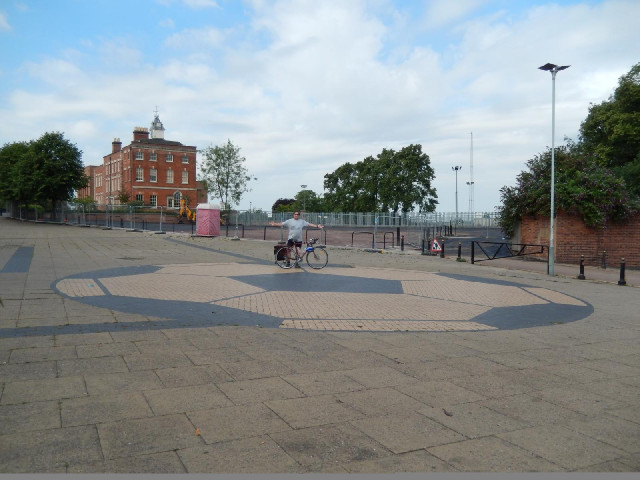| Back to the previous photograph | |
|
| |
 ... Football! I'm going to try to visit every football ground in the top five divisions of this year's English league. There are 116 of them. If that sounds as boring to you as it does to me, don't worry: I hope I'll find plenty of other things to look at along the way. I've heard of people doing tours like this before. Normally though, they only do the top four divisions, which is 92 clubs. For many years, that was an almost static list; enough that you could have bought a book about football which was a few years out of date and the list would probably still have been correct. From 1959 to 1987, clubs would be automatically promoted and relegated between those four divisions between one season and the next according to their performance but there was no automatic relegation out of the bottom of the fourth division. During those 28 years, only 6 clubs dropped out of those divisions and 6 more replaced them so in the whole period, only 98 teams ever played in those divisions. More remarkably, only ever 98 grounds were used since not a single one of those clubs moved to new premises during that time. During that period, those four divisions were administered by one body, the Football League, which led to the "league" clubs being seen as very different to the thousands of other "non-league" clubs. Since then, there have been three main changes. First, automatic promotion and relegation has been introduced between the fourth and fifth divisions, leading to mixing of the previously "league" and "non-league" clubs. A club could in theory now slide all the way from the top division to the bottom of the hierarchy, which in some parts of the country is 24 divisions deep, and a club from the bottom could climb to the top. Secondly, in 1992 the top division left the Football League and became a separate body called the Permier League. It still occupies the same place in the hierarchy but it means that the top 92 clubs are no longer a distinct group. This has probably led to the fifth and sixth divisions, which from this year will be known as the National League, being taken more seriously since if a list of "proper" clubs had to include both the Premier League and the Football League then there's no real reason for it not to include the National League too. Thirdly, the required safety standards for football grounds have been significanly tightened, partly because of two incidents in the 1980s which collecively killed 152 spectators. As a result, many clubs have had new grounds built. Of the 116 grounds currently in the top five divisions, 33 have been opened since 1990. The reason why I'm cutting of my list after the fifth division, rather than after the fourth or sixth like most organisations do, is simply because the top five divisions are the ones in which clubs from all over England play against each other. The sixth division has separate competitions for the North and the South and the lower divisions are divided into progressively smaller regions but just as Newcastle have to travel to Southampton to play in the top division, so Gateshead have to travel to Eastleigh to play in the fifth. If I'm going to be travelling the length of the country to visit football grounds than I'm only interested in the ones which other teams travel the same distance to visit. There are also a few other categories of grounds which I would like to visit along the way, just because I became interested in them while researching this trip. I'll explain what they are when I get to Liverpool. Eventually, if all goes well, I hope to fill in all the little spaces in this diagram. UTC Time: 09:14, Saturday 08 August 2015 Local Time: 10:14, Saturday 08 August 2015 Estimate of longitude: 2° 7' 44.98" W = -2.129160° Estimate of latitude: 52° 35' 20.58" N = 52.589050° Possible error on position estimate: 50 metres | |